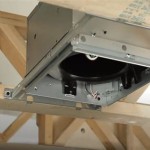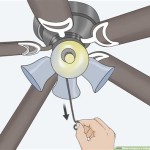How to Build a Faux Coffered Ceiling
A coffered ceiling is a beautiful and elegant architectural feature that adds depth and dimension to a room. However, true coffered ceilings require significant structural work and can be expensive. Fortunately, you can achieve a similar look with a faux coffered ceiling, which is a much more affordable and DIY-friendly option. This article will guide you through the process of building a stunning faux coffered ceiling, adding a touch of sophistication to any space.
1. Planning and Preparation
Before you begin, it's essential to plan carefully and gather the necessary materials. Start by measuring the room and sketching out the design of your coffered ceiling. Consider the size and shape of the coffers, keeping in mind the overall design aesthetic of the room. You can opt for simple squares or rectangles or explore more intricate patterns. Once you have a clear design, you can determine the required materials, including plywood, trim molding, paint, and adhesive.
Next, prepare the ceiling surface. Ensure it is clean, smooth, and free of any cracks or imperfections. If necessary, patch any holes or cracks with spackle and sand the surface for a smooth finish. You may also want to apply a primer to the ceiling to create a uniform base for the paint.
2. Creating the Coffer Grid
The foundation of your faux coffered ceiling is the grid that defines the coffers. You can create this grid using plywood sheets cut to the desired size. Using a straight edge and pencil, mark the ceiling where you want the grid lines to run. Make sure these lines are straight and parallel. You can transfer these lines to the plywood using a ruler and pencil.
After marking the plywood sheets, carefully cut them along the lines using a jigsaw or a circular saw. Once cut, the plywood pieces will form the individual coffers. Attach these plywood pieces to the ceiling using construction adhesive, ensuring a secure bond. For added support, you can also use screws to fasten the plywood to the ceiling joists.
3. Adding Trim Molding
Trim molding is the finishing touch that gives the faux coffered ceiling its elegance. Choose a molding style that complements the overall design of the room. You can use standard trim molding or opt for more elaborate designs like crown molding or picture frame molding.
Start by applying the trim molding around the perimeter of each coffer. Use construction adhesive and finishing nails to secure the molding in place. Ensure the molding is flush with the plywood and that the corners fit together seamlessly. Next, apply the trim molding along the grid lines, creating a continuous border around each coffer. Pay attention to the mitered corners, ensuring they are precise and well-aligned.
4. Finishing Touches
Once all the trim molding is installed, it's time to finish the faux coffered ceiling. You can choose to paint the entire ceiling in a single color or create a more dramatic effect by painting the coffers a different shade. For a classic look, consider using a darker shade for the coffers and a lighter shade for the surrounding ceiling.
After painting, fill any gaps or nail holes with wood filler. Sand the surface smooth and apply a final coat of paint. You can also add decorative accents to the coffers, such as medallions, stencils, or wallpaper. Finally, clean up any dust or debris, leaving your beautiful faux coffered ceiling ready to impress.

Faux Coffered Ceiling Confessions Of A Serial Do It Yourselfer

Faux Coffered Ceiling Confessions Of A Serial Do It Yourselfer

Coffered Ceiling Diy Step By Install Guide Arched Manor

Diy Coffered Ceilings With Moveable Panels Renovation Semi Pros

Diy Rustic Coffered Ceiling Remodelando La Casa

Coffered Ceiling Diy Tutorial Palmetto Highway

Diy Coffered Ceilings With Moveable Panels Renovation Semi Pros

Install A Flat Coffered Ceiling Low Profile Design Beautiful Diy Makeover Idea

Easy Diy Coffered Ceiling Idea Simple Low Profile Design Steps And

Diy Coffered Ceiling Tutorial By Ron Hazelton
Related Posts








